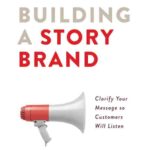Remember when Blu-ray and HD DVD were locked in a head-to-head battle to become the standard for high-definition video? As Blu-ray emerged the winner, retailers faced a dilemma: shelves full of soon-to-be obsolete HD DVD players, each retailing for around $400. So, how did they manage to sell off that inventory? The answer lies in a single, deceptively simple word: “Free.”
Retailers began bundling those HD DVD players with a promotion: “Buy now and get five free DVDs.” Never mind that the format was on the verge of extinction. The offer tapped into something deep in the human psyche—our irrational love for “free.” Suddenly, those outdated machines flew off the shelves, clearing inventory and paving the way for Blu-ray to take over.
This story is more than just a quirky bit of tech history. It’s a powerful illustration of behavioral economics at work. When people see the word “free,” their rational thinking often shuts down, and impulse takes over. It’s not about the actual value—it’s about the perceived value.
Amazon and the Shipping Revolution
Amazon was among the first to fully capitalize on this irrational trigger. When they introduced “Free Shipping on orders over $25,” they weren’t just giving customers a deal—they were reprogramming consumer behavior.
People who visited Amazon to buy a single item suddenly found themselves adding a second or third item to their cart—not because they needed them, but to meet the $25 threshold and unlock the magical “free shipping.” The result? A significant increase in average order value, all driven by a cost-saving illusion.
The Psychology of “Free”
Why is “free” such a potent motivator? According to behavioral economists like Dan Ariely, the word bypasses our logical brain and heads straight to our emotional core. In his book Predictably Irrational, Ariely explains that the allure of free items causes us to overvalue them—even when they make no economic sense.
Here’s the kicker: the effect is universal. Whether it’s a free coffee with a purchase or free oil changes for life when you buy a new car, the promise of getting something for nothing distorts our perception of value and risk.
In fact, the word “free” appears in more than 750 billion Google searches every month. That’s not a typo—billion. From “Free Wi-Fi” to “Free Checking,” marketers everywhere are tapping into this cognitive quirk to steer decision-making.
Free as a Pricing Strategy: More Than Just a Gimmick
When used strategically, “free” can be a tool—not a giveaway. Businesses have developed entire models around this principle. Take the freemium model used by SaaS companies like Dropbox, Zoom, or Mailchimp. These companies offer a basic version of their service for free, luring users in. Once people integrate the product into their routines, they’re more likely to pay for premium features.
Or look at how mobile games are monetized. The games themselves are free to download and play. But if you want extra lives, coins, or characters? That’s where the revenue pours in.
Smart Applications of “Free” in Your Business
Here are some ways you can apply the “free” principle in your own business:
- Free Trial Periods: If you offer a subscription service or digital product, a 7–30 day free trial can be a low-risk way to draw in new users.
- Free Bonus With Purchase: Like the HD DVD example, bundling a free item (even if it costs you little) can help move high-ticket or slow-moving products.
- Free Consultation or Audit: Service providers can build trust and open the door to paid engagements by offering a free introductory session.
- Free Upgrades: Retailers often offer a “buy X and get a free upgrade to Y” deal. This costs little, but adds perceived value.
If you’re a local service provider (say, a cleaning company or tree service), offering the first service call or a seasonal check-up for free can be a great way to introduce your services and earn long-term clients.
A Word of Caution
The word “free” is powerful, but it must be used honestly. Overusing it—or hiding costs behind a “free” label—can backfire and damage your brand’s credibility. Transparency is key. Make sure your “free” offer delivers real value.
So, What Can You Offer for Free?
Take a moment to consider your current offerings. What could you give away that would provide genuine value and encourage future purchases? Maybe it’s a bonus product, a piece of educational content, or access to a short service experience. Whatever it is, remember: your goal is not just to give something away—it’s to spark a buying journey.
What is something free you could offer right now to create a compelling reason for a potential customer to choose you over the competition?












